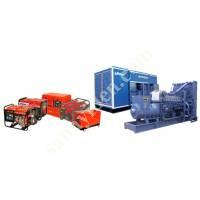
Time mechanical part
Mechanical duty is a powerful tool to use to help you move goods in your business. A great way to cut costs and speed up processes. Here we take a look at a system of how mechanical responsibility for your business is!
How Does a Mechanical Timer Work?
A mechanical relay is a type of switch that uses a rotating lever to send or receive signals. A relay consists of two parts: the arm and the connector. The arm is a rotating part that sends electrical signals to the connector. The connector is a fixed part that receives electrical signals from the arm.
When you use a mechanical relay you need to make sure that both parts are working properly. If a part is not working, your system may not be able to communicate with other parts of your business. Mechanical relays can be used for many different purposes, such as controlling systems in factories or businesses, connecting cables in homes or offices, and more.
Mechanical relays work by exchanging electrical signals between two stationary devices. The signal passes through a lever (or other rotating component) and a Connector (a fixed part). The coupler then receives the signal and sends it back to the arm. This process continues until one of the devices sends an electrical signal that matches the signal received from the other. For this process to work properly, both devices must work properly throughout the entire cycle!
How To Use A Mechanical Timer For Your Business.
A mechanical relay is a device used to transmit or receive electrical signals. It can be used to connect and disconnect electronic devices such as lights and switches in a home or office. Mechanical relays are also common in business environments where they can be used to transfer data between computers and other electrical equipment.
Subsection 2.2 Use a Mechanical Relay for Your Company.
When using a mechanical relay in your business environment, it is important to make sure that the connected devices are compatible with each other. This will ensure that transfers are clear and reliable and that data transfers are error-free. Different types of electronics require different relays, so it's important to research which type of relay best fits your needs before starting any project.
Subsection 2.3 Use Mechanical Relay for Other Applications.
You may need to use a mechanical relay elsewhere in your home or office for other purposes as well. For example, you might be using a relay to store important documents in an emergency. Or you may need to use a relay to connect multiple rooms to save space. In any case, research your device's specific needs before embarking on any project!
Tips for Successfully Using a Mechanical Timer for Your Business.
If you need a relay to do some housework, consider using mechanical relays. These devices are often used in businesses to provide fast and easy communication between machines and people.
Subsection 3.2 Use a Mechanical Relay for Your Company.
When it comes to using mechanical relays for your company, there are a few things to keep in mind. First, make sure the relay is compatible with your work machine. Second, choose a crossover frequency suitable for your needs - this will affect how quickly transactions complete. And finally, be sure to test the function of the relay before using it live to ensure correct Operation.
3.4 Other Applications:
Subsection 3.3 Use Mechanical Relay for Other Applications.
Mechanical relays can also be used in other applications such as home remodeling or Carpet cleaning. Be sure to check out our related posts on these topics to get started!
The Mechanical Relay is a vital tool for businesses of all sizes. You can increase productivity and increase your profitability by using it for a variety of purposes, from household chores to company operations. Also, this article provides tips for success so you can realize the full potential of this technology for your business. By following these simple steps, you will be able to make your mechanical relay a successful part of your business!
Mechanical Timer ,
Mechanical Relay ,
relay ,
Mechanical ,




